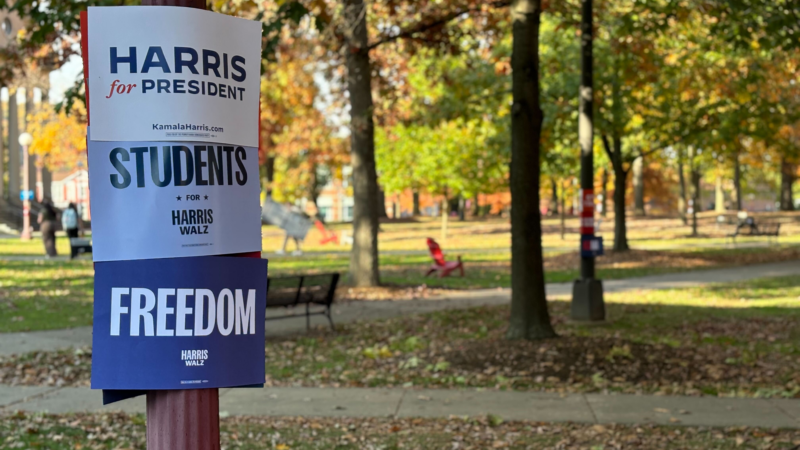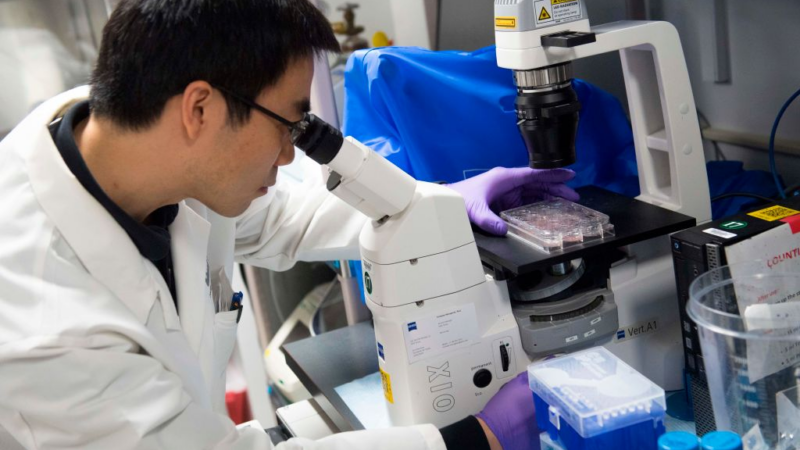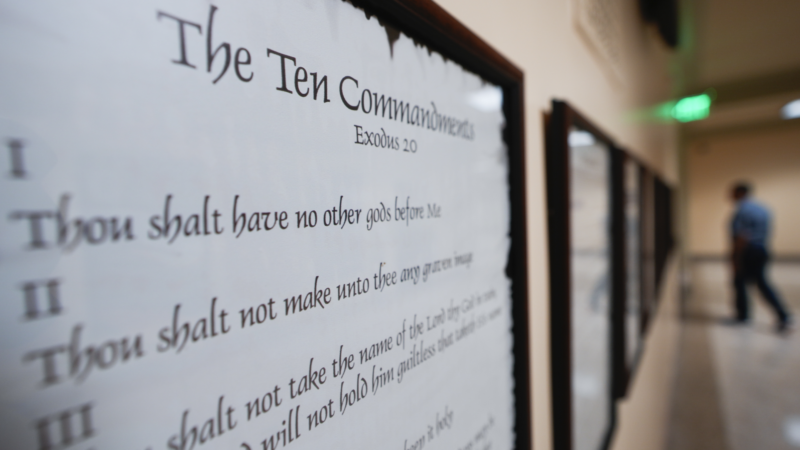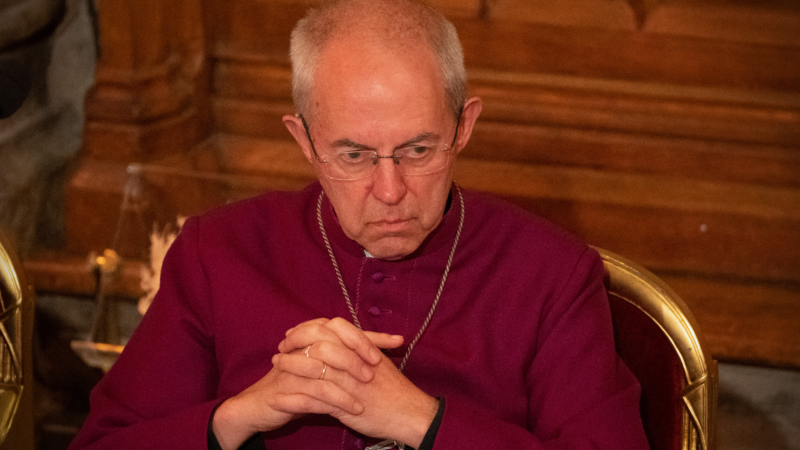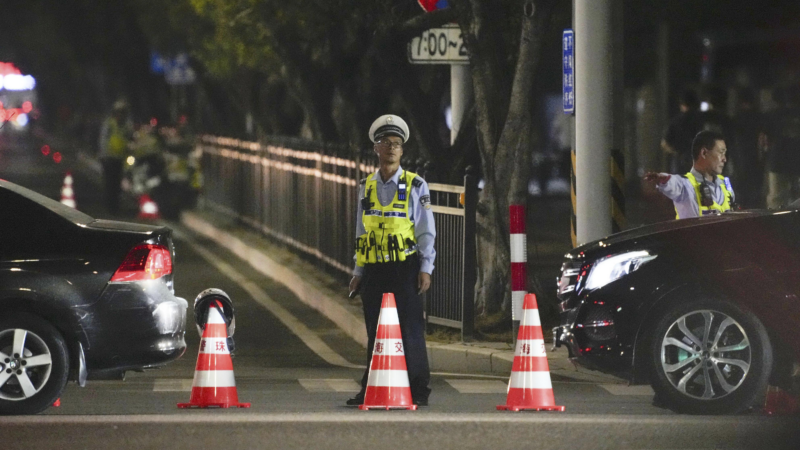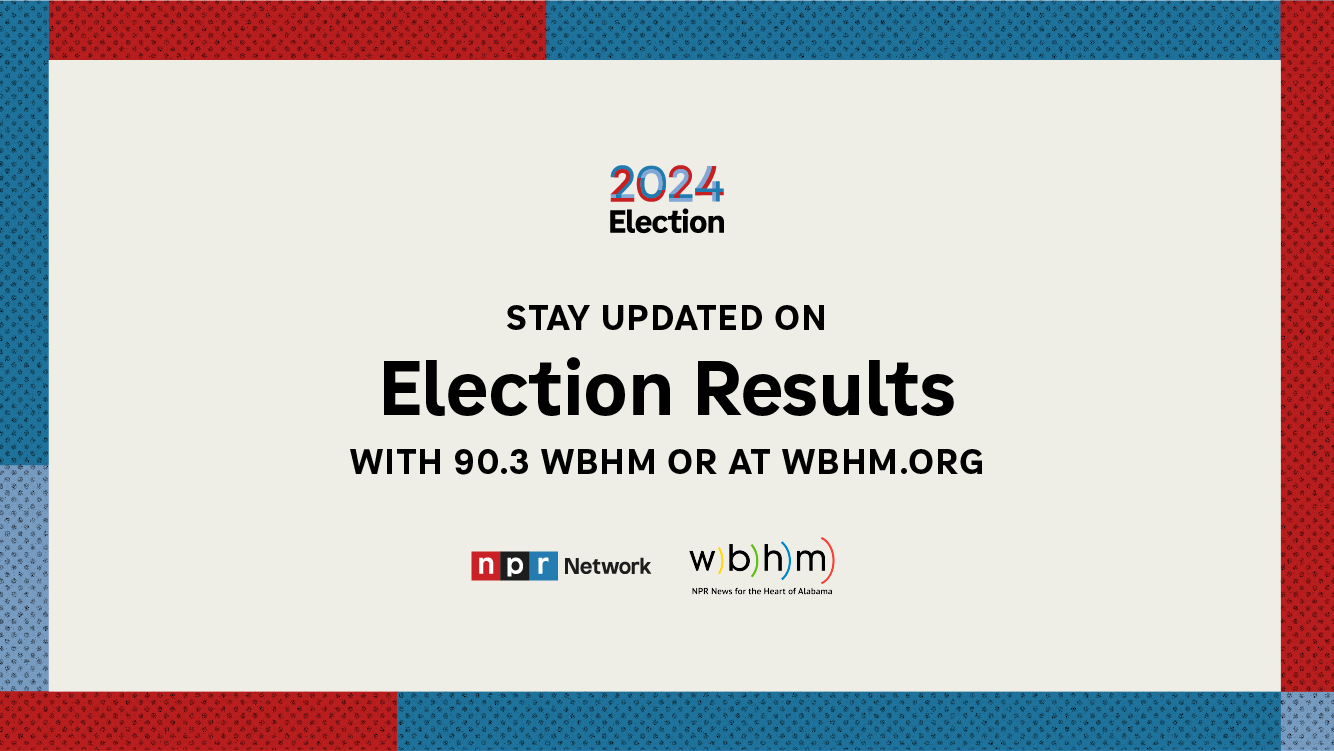Colleges are key to Democrats’ strategy to lose by less in rural Pennsylvania
INDIANA, Pa. — The leaves on the trees were turning shades of red, orange and yellow as longtime resident Lynne Alvine sat on a bench in the heart of campus at Indiana University of Pennsylvania.
While watching student organizers set up for a Get Out The Vote rally, the county’s local Democratic party committee chair made a bold statement.
“The road to the White House goes through Indiana County, Pennsylvania,” she declared.
But this campus lives within a ruby-red county, one that went for former President Donald Trump by more than 37 points in 2020 and just under that in 2016.
Alvine understands that. Winning isn’t the goal. Instead, it’s to slightly narrow the margins – a state-wide strategy in rural areas that worked for Democratic Sen. John Fetterman during his campaign in 2022 and one that Vice President Harris and the Democratic party are trying to replicate.
“Our motto is: lose by less,” she said. “We don’t imagine that we can win the vote for Harris in Indiana County, but we can bring out enough Democratic votes.”

Which includes driving up turnout on campus and getting young voters engaged.
![Andrew Muth, 24, is a Democratic organizer and graduate student at Indiana University of Pennsylvania. '[Vice President Harris] has been laying out plans to deliver for us, even more so than President Biden did,' he said on Oct. 23 at a Get Out the Vote rally on campus.](https://npr.brightspotcdn.com/dims3/default/strip/false/crop/3024x4032+0+0/resize/1200/quality/75/format/png/?url=http%3A%2F%2Fnpr-brightspot.s3.amazonaws.com%2Ffa%2F2f%2Fdd7fc60042ee955e80430983a191%2Fimg-0178.jpg)
“I think we bring the energy to counties like this,” said graduate student Andrew Muth, 24, who helps lead the school’s College Democrats.
“Together, we will knock on doors. We’ll do joint phone banks. We will focus primarily on the campus because we know, and the county knows and the state knows, that a path to victory in Pennsylvania is campuses, driving up the numbers in addition to rural voters,” he added.
Four years ago, though President Biden won Pennsylvania by less than two percentage points, voters under 30 sided with him by a whopping 27-point margin. That’s support Muth hopes to repeat for Harris.
But being from a small town himself, less than an hour away from campus, Muth also understands the history Democrats have in getting their message out to the community here.
“In 2016, a lot of rural voters felt like the government wasn’t working for them and that they were being left behind,” he recalled. “I want them to know that Democrats see you and we care about your future,” Muth continued. “We want you to be able to build a family … We want you to be able to afford your groceries. We want you to be able to afford housing.”
The Harris campaign is working to increase their vote shares in rural areas of the state, opening 50 offices coordinated with the Democratic party, 16 of those in counties that Trump won by double-digits four years ago.
Harris has also been dropping millions on targeted advertising in the state. Since August, the campaign and outside supporting groups have spent nearly $60 million in areas outside of the Pittsburgh and Philadelphia media markets, according to AdImpact.
That’s in addition to Harris and her running mate, Minnesota Gov. Tim Walz, making visits to a handful of small cities and towns across the state. Last month, Harris visited Johnstown., a small city east of Pittsburgh in Cambria County, where nearly seven in 10 voters supported Trump in 2020.
“There are a lot of people in Pennsylvania who deserve to be seen and heard,” Harris said. “That’s why I’m here in Johnstown. And I will be continuing to travel around the state to make sure that I’m listening as much as we are talking.”

Trump has campaigned in many of the same spots, as well as in Indiana County, a place Harris has not visited.
During that appearance on IUP’s campus, Trump focused on the rural identity and, as is characteristic of his campaign, fear of immigrants.
“You live in a small town your whole life. You pay your taxes. You really are exemplary. You pay everything. You do everything. You love your town. You love your country. You know the town so well by name. You’re just so proud of it,” Trump said.
“And suddenly, [Harris] flies in thousands and thousands of migrants from the most dangerous places on earth, and they deposit them right smack in the middle of your community,” he added, without evidence. In the case of Indiana County, Pa., in particular, just 1.8% of the population is foreign-born, according to U.S. Census data.

But the Democrat’s rural strategy is not a concern, argued Kush Desai, Trump’s Pennsylvania communications director.
“Reaching out to voters and canvassing them is important, but that only works when you have a candidate and a message that are a winning candidate and a winning message,” Desai said.
“When it comes to things like [the] economy and immigration, Harris is not the candidate of change,” he added. “The issues that we’re running on, if anything, have a greater salience in rural Pennsylvania and rural America writ large.”
At a coffee shop on the edge of IUP’s campus, those are the topics shaping 22-year-old graduate student Keely McKlveen’s vote for Trump.
“It’s kind of a philosophy of voting for the lesser of two evils amongst the parties,” said McKlveen, who commutes to school each day from the neighboring county, making common purchases like gas a concern.
When weighing Harris as an option, McKlveen said she was put off by the Democratic nominee’s inability to differentiate herself from the current administration and acknowledge missteps over the last four years.
“That’s kind of pulled me away from her in a sense,” she said. “I will say Trump could be a better communicator just because he’s very loud, which polarizes our people. However, he is very clear on what he stands for.”
Back at the rally, other students continue to side with Harris in large part over social issues, especially abortion rights, which the vice president has made a key issue in her campaign.
That’s the case for 20-year-old Samya Settles, who had moved a few feet away from the crowd with some of her friends as the last few speakers finished up.

“I’m always an advocate for someone having their own right to their body and who they love and what medical decisions they should make,” she said. “That’s definitely a huge factor that’s causing me to vote.”
While Harris has repeatedly emphasized her proposed economic platform, she’s kept issues like safeguarding abortion access central to her outreach. It’s a topic that has motivated young voters to turn out in recent elections, notably the 2022 midterms.
Compared to Biden, Harris has had increased support from younger voters since taking over the Democratic ticket. It’s something Settles resonated with, explaining she feels more connected to her.
“I would say I still feel that. And I think it really is because of … her age. She really does know how to connect with the young people,” she said. “She is us.”
Trump to name former Arkansas Gov. Mike Huckabee as ambassador to Israel
In the midst of the Israel-Hamas war, President-elect Donald Trump announced he will nominate Huckabee, a loyalist and former Republican governor, to serve in the key post as ambassador to Israel.
With Trump coming into power, the NIH is in the crosshairs
The National Institutes of Health, the crown jewel of biomedical research in the U.S., could face big changes under the new Trump administration, some fueled by pandemic-era criticisms of the agency.
A man told 911 a bear chased him off a cliff. Weeks later, he was arrested for murder
Authorities say Nicholas Hamlett killed a man in Tennessee in an attempt to steal his identity, and reported it to police as a bear attack. He was arrested in South Carolina after a weekslong manhunt.
Federal judge blocks Louisiana law that requires classrooms to display Ten Commandments
The new Louisiana requirement that the Ten Commandments be displayed in every public classroom by Jan. 1 was temporarily blocked Tuesday. The judge said the law is "unconstitutional on its face."
Archbishop of Canterbury Justin Welby resigns over sex abuse scandal
Archbishop of Canterbury Justin Welby has resigned over accusations that he failed to report physical and sexual abuse to the police.
A man drove his car into a crowd in southern China, killing 35
A man who authorities said was upset over his divorce settlement rammed his car into a crowd of people exercising at a sports complex in southern China, police said.
